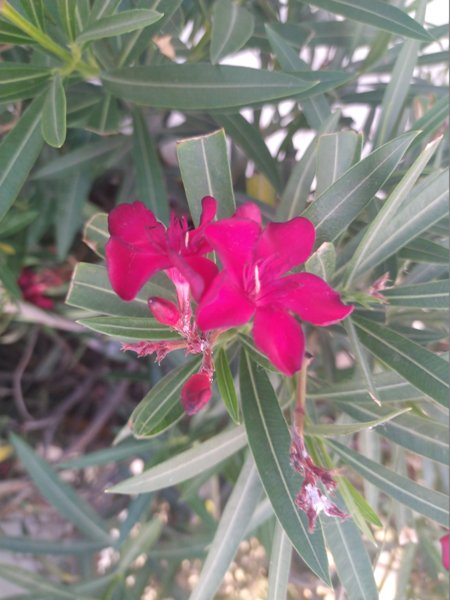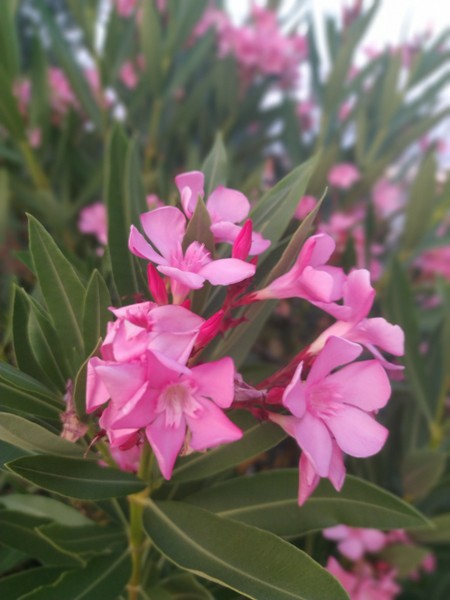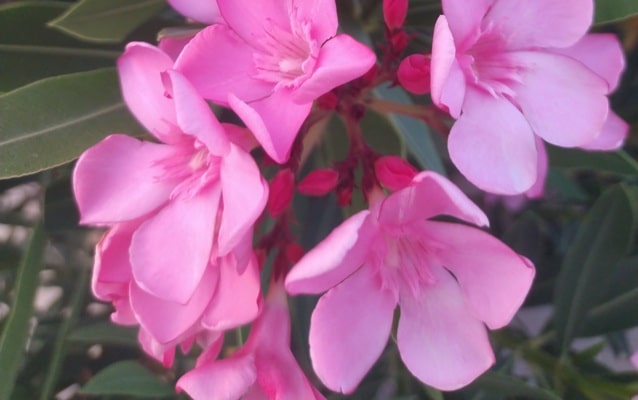How to care for an oleander plant in England?
Oleander flower is known as one of the poisonous plants. Oleander flower, which is a flowering plant, is also common in gardens. Oleander flower is a plant that is very resistant to thirst. Therefore, oleander flower is a type of plant that grows more in arid regions. Oleander flower grows in nature mostly in stream beds. Especially oleander flower is used a lot in making medicinal drugs.
Caring for oleanders in the UK can be challenging due to the country’s cooler climate, especially during the winter months. However, with proper care and attention, it is possible to grow oleanders as potted plants indoors or in a greenhouse. Here are some guidelines for caring for oleanders in the UK:
- Location: If you are growing oleanders as potted plants, place them in a sunny and sheltered spot indoors. Choose a location where they can receive at least 6-8 hours of sunlight per day. If you have a greenhouse, that can provide an ideal environment for oleanders, as it can mimic their native warm and protected conditions.
- Temperature: Oleanders are sensitive to cold temperatures and cannot tolerate frost. Keep them in a room or greenhouse with a minimum temperature of around 10-15°C (50-59°F) during the winter months. Avoid exposing them to temperatures below 5°C (41°F).
- Watering: Oleanders prefer well-draining soil, so be careful not to overwater them. Allow the top inch of the soil to dry out before watering again. During the winter, water sparingly as the plant’s growth slows down.
- Humidity: Oleanders thrive in high humidity, so if you are growing them indoors, consider using a humidity tray or a room humidifier to maintain humidity levels.
- Pruning: Regularly prune oleanders to maintain their shape and size. Pruning should be done in the spring before new growth begins. Remove any dead or diseased branches to promote healthy growth.
- Fertilization: Fertilize oleanders during the growing season (spring to early fall) with a balanced, water-soluble fertilizer. Follow the manufacturer’s instructions for application rates.
- Pests and Diseases: Watch out for common pests such as aphids, scale insects, and spider mites. Regularly inspect the plant and treat any infestations promptly. Oleanders can also be susceptible to diseases, such as leaf spot and powdery mildew. Ensure good air circulation and avoid overhead watering to prevent disease development.
- Repotting: If you are growing oleanders in pots, repot them every couple of years in the spring to refresh the soil and provide more space for the roots.

Remember that oleanders are toxic plants, so keep them out of the reach of children and pets. If you have any concerns about caring for oleanders in the UK, consider consulting with local gardening experts or horticulturists for specific advice based on your location and growing conditions. Red oleander blossom in England >>
Will oleander grow in UK?
Oleander (Nerium oleander) is a tropical and subtropical plant native to regions with warm climates, such as the Mediterranean, Middle East, and North Africa. In the UK, which has a temperate maritime climate with cool summers, it is unlikely that oleander will grow outdoors successfully due to the colder temperatures during winter.
Oleander is not frost-hardy and cannot withstand freezing temperatures. In the UK, winters can be too harsh for oleander, and the plant may not survive the cold conditions. Even in milder coastal areas of the UK, the winter temperatures can still be too low for oleander to thrive.
However, if you are in the UK and wish to grow oleander, you may consider keeping it as a potted plant indoors or in a greenhouse. By providing the plant with a warm and sheltered environment during the colder months, you might be able to cultivate it successfully. Just ensure that it receives sufficient sunlight and care during the winter.
When considering growing any non-native plant in a new region, it is essential to be aware of the specific climate and growing conditions in that area. If you have concerns about growing oleander in the UK, it’s a good idea to consult with local horticulturists or gardening experts who can provide more specific advice based on your location.
What months does oleander bloom in England?
Oleander (Nerium oleander) is a tropical and subtropical plant that typically blooms during the warm months in regions with mild climates. In England, which has a temperate maritime climate, oleanders may bloom during the late spring, summer, and early autumn months, which generally span from May to September.
The exact blooming period of oleanders can vary depending on the specific location within England, local weather conditions, and the microclimate of the area where they are grown. In coastal areas and warmer regions, oleanders may start blooming earlier in the spring and continue to bloom through the summer and into early autumn. In colder or inland regions, their blooming period may start later and last for a shorter duration.

It’s essential to keep in mind that oleanders are sensitive to frost and cold temperatures, so in regions where the winters are particularly harsh, they may need to be protected indoors or in a greenhouse during the colder months. Growing oleanders in pots or containers that can be moved indoors during the winter can help ensure their survival in colder climates. Pink oleander plant in the UK >>
If you are specifically interested in growing oleanders and observing their blooming period in a particular area in England, it’s a good idea to check with local gardeners, horticulturists, or botanical gardens in that region for more precise information about the blooming time and growing conditions in that area.
Can you grow Nerium oleander in the UK?
While it is possible to grow Nerium oleander (commonly known as oleander) in the UK, it can be challenging due to the country’s cooler and wetter climate. Oleander is a tropical and subtropical plant that thrives in warm and sunny conditions, and it is native to regions with hot and dry summers, such as the Mediterranean.
In the UK, oleander is not frost-hardy and cannot tolerate freezing temperatures. Therefore, it is generally not recommended to grow oleander outdoors in the ground, especially in regions with colder winters.
However, if you are determined to grow oleander in the UK, there are a few options you can consider:
- Potted Plants: Oleander can be grown in large pots or containers, which allows you to move them indoors during the colder months. This way, you can provide a more suitable environment for the plant during the winter and protect it from freezing temperatures.
- Greenhouses: Growing oleander in a greenhouse can create a warmer and more sheltered environment, mimicking its native climate. A greenhouse can provide protection from frost and cold winds, allowing oleander to thrive better.
- Coastal Areas: Some coastal areas in the UK have milder winters compared to inland regions. If you are in a coastal region with relatively mild temperatures, you might have a better chance of successfully growing oleander outdoors.
- Microclimates: Certain microclimates in the UK, such as urban heat islands or south-facing sheltered areas, may create slightly warmer conditions. These microclimates can be more suitable for growing oleander than other parts of the country.

Remember that oleander is a toxic plant, so if you decide to grow it, be cautious about its placement, especially if you have children or pets. Additionally, consider consulting with local gardening experts or horticulturists for specific advice based on your location and growing conditions in the UK.
Is the oleander flower poisonous?
Yes, the oleander flower (Nerium oleander) is poisonous. Oleander is considered one of the most toxic plants commonly found in gardens and landscapes. All parts of the oleander plant, including the flowers, leaves, stems, and even its sap and nectar, contain toxic compounds known as cardiac glycosides.
The cardiac glycosides found in oleander are potent toxins that affect the heart and other organs. Ingesting any part of the oleander plant can lead to severe poisoning, with potentially life-threatening effects.
Symptoms of oleander poisoning may include:
- Gastrointestinal issues: Nausea, vomiting, abdominal pain, and diarrhea.
- Cardiac effects: Irregular heart rhythms (arrhythmias), slow heart rate (bradycardia), and possible heart failure.
- Neurological symptoms: Dizziness, confusion, and in severe cases, seizures.
- Respiratory distress: Difficulty breathing in severe cases.
It’s important to exercise extreme caution around oleander, especially if you have children or pets. Keep the plant out of their reach, and do not consume or use it for any medicinal purposes unless under the guidance of a trained healthcare professional.
If you suspect oleander poisoning or if someone ingests any part of the plant, seek immediate medical attention or contact a poison control center for appropriate advice and treatment.





